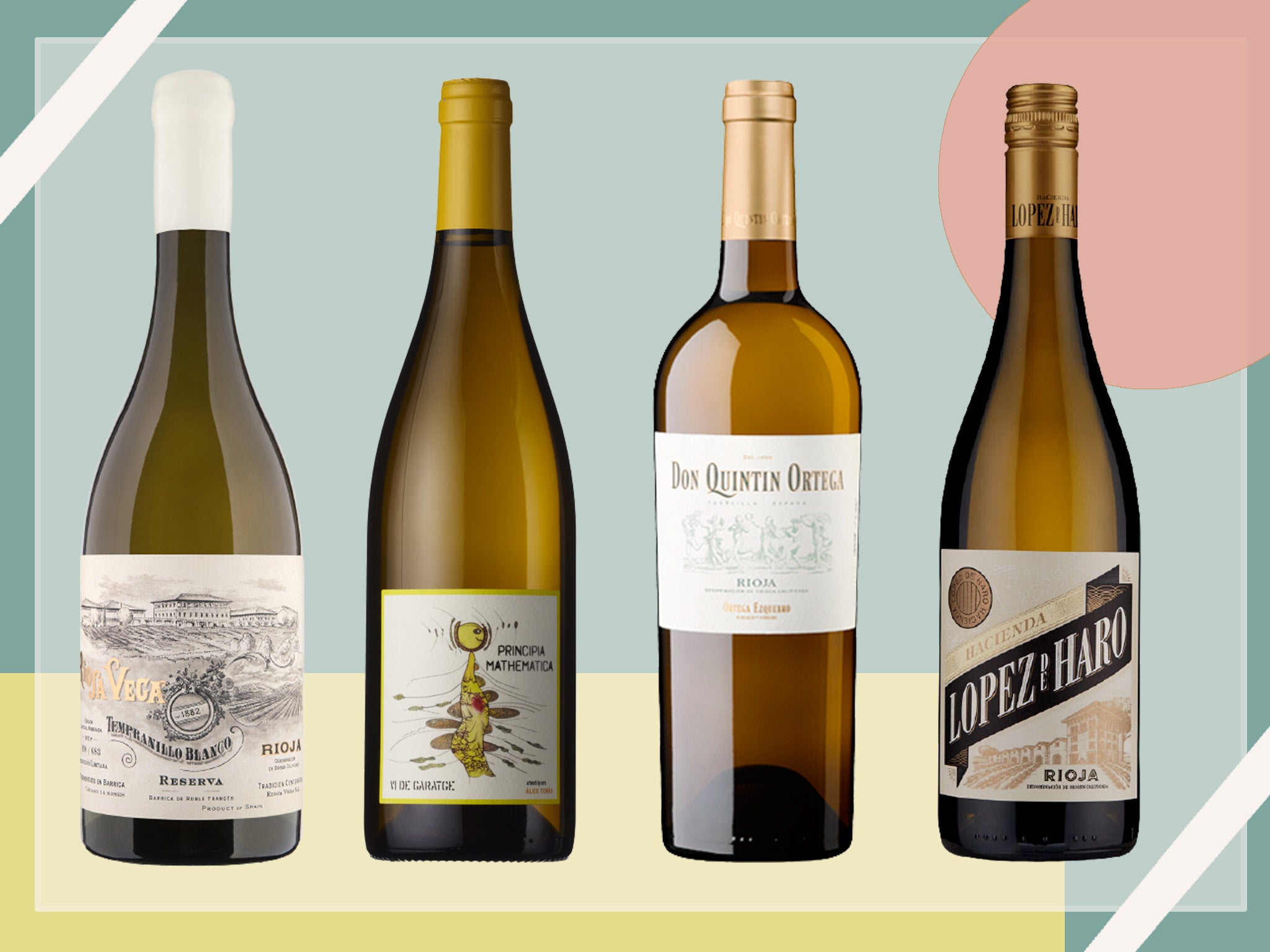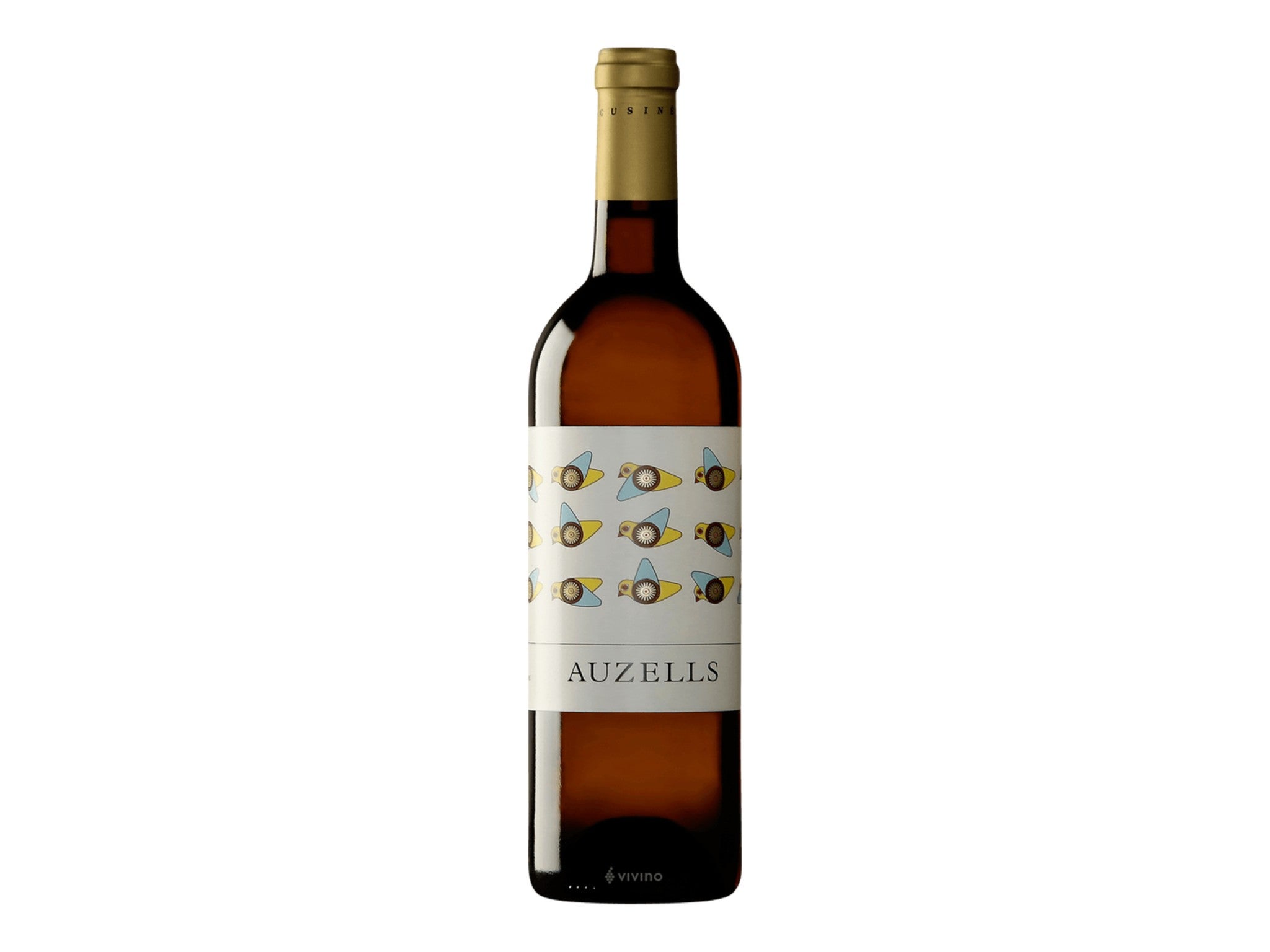
The Independent's journalism is supported by our readers. When you purchase through links on our site, we may earn commission. Why trust us?
10 best Spanish white wines to try, from albarino to rioja blanco
Finally getting the recognition they deserve, these are the vino blancos to try

Spanish white wines have flown under the radar for many years, overshadowed by their rivals in France, Italy and the new world. While most wine lovers will recognise chablis as a classy French dry white, or be aware that New Zealand sauvignon blanc is a refreshing wine of reliably high quality, not many would be able to point to a great Spanish white.
And the names of some Spanish white grapes, such as godello or viura, remain relatively unfamiliar. Indeed, it is the big red wines from Rioja or Ribera del Duero, mostly made from the tempranillo grape, or the sherries of the south, that we most associate with Spain.
But all that is changing, with increasing recognition in our restaurant wine lists and supermarket shelves of the joys of zesty, saline, albarino from Galicia in northwest Spain, which can definitely appeal to those sauvignon blanc lovers. Whites are also now staking their own claim to fame in mighty rioja – and their full-bodied, slightly oaky style will please lovers of apricot-flavoured and buttery chardonnays.
White rioja sales to the UK increased by 19 per cent last year over 2019. And there are a host of exciting and different regional white wines to investigate, full of unexpected pleasures. So, here are our best Spanish whites for 2021: explore and enjoy!
How we tested
These wines are highly food-friendly and suitable for almost any occasion, particularly drunk lightly chilled for summer. They were tasted with a wide variety of foods, ranging from simple midweek meals to dinner parties, and we made sure to include wines to suit different budgets.
Read more:
The best Spanish white wines for 2021 are:
- Best overall – Alemany I Corrió principia mathematica 2019: £21.61, Hometipple.com
- Best bargain – Hacienda López de Haro rioja blanco 2020: £8.99, Majestic.co.uk
- Best for dinner parties – Rioja Vega tempranillo blanco reserva 2015: £44.99, Houseoftownend.com
- Best for vegetable dishes – Don Quintin Ortega blanco rioja 2019: £16.95, Jeroboams.co.uk
- Best for pairing with oysters – Mar de Frades finca valiñas 2015/16: £25.90, Vinvm.co.uk
- Best for an aperitif – Paco & Lola albariño 2020: £14, Sainsburys.co.uk
- Best all-rounder – Maruxa Godello valdeorras 2020: £10.95, Thewinesociety.com
- Best for spicy Asian dishes – Viñas Del Vero Somontano gewürztraminer 2019: £12.99, Oxfordwine.co.uk
- Best for simpler fish dishes – Auzells Costers del Segre 2020, 13%: £11.50, Thewinesociety.com
- Best wine for desserts – Bodegas Ximénez Spínola exceptional harvest 2019: £22.79, Hometipple.com
Alemany I Corrió principia mathematica 2019, 12.5%, 750ml

Best: Overall
Rating: 10/10
Hometipple’s description of this wine from the Penedes region near Barcelona is “genius bonkers”, and it’s hard to disagree. Made with the xarel-lo grape normally found only in sparkling cava, it is fermented with naturally occurring yeasts and aged in oak barrels, and is naturally a little cloudy. Very dry but mellow and astonishingly complex, with layers of flavours of apricots, apples and nuts, all opening up on the palate with a long, spicy finish.
As it is vegan-friendly, this wine is perfect with all plant-based cuisine, but equally at home with many types of food, from full-flavoured fish dishes such as pan-fried red mullet or stuffed squid, through to barbecued or grilled lamb. A stunning, original wine.
Hacienda López de Haro rioja blanco 2020, 12.5%, 750ml

Best: Bargain
Rating: 8/10
Here is proof of the amazing advances in white rioja in recent years: made from the fruit of 80-year-old viura vines, this has a lovely nutty, mellow quality, with creamy notes characteristic of this grape, and some rich fruit flavours of quince and honeysuckle while remaining crisp and clean on the palate. Complexity and such a lovely balance is achieved by careful winemaking, creating a wine that punches well above its weight for its price point. This is a wine for fish tapas or slices of serrano ham on tomato bread.
Rioja Vega tempranillo blanco reserva 2015, 13%, 750ml

Best: For dinner parties
Rating: 9/10
Tempranillo is, of course, the dominant red grape of rioja, and the blanco grape is a relatively new mutant version that has really begun to excite winemakers. And while there are quite a few takes on the grape around, this one is “reserva” – the accolade Spanish winemakers give to the best creations. From the finest grapes, it’s the ultimate luxury buy for special occasions, made by one of the oldest and most venerated rioja producers.
This contains layers of rich fruit flavours of, again, quince and Asian pears, honey, smoke and gentle spice, with unctuous complexity delivered from long barrel ageing. A wine to savour with fine white fish, such as a whole roast turbot or brill, or pork belly with Asian spices.
Don Quintin Ortega blanco rioja 2019, 13%

Best: For vegetable dishes
Rating: 7/10
This falls somewhere between the two bottles above: another example of how to best treat viura, from a long-established winery in the Rioja Baja area, using ancient vines and named after the founder, Quintin Ortega, who planted the first ones in 1896.
Just a small, 10 per cent addition of the malvasia grape delivers some complexity and added smokiness, resulting in a beautifully balanced wine with rich, creamy fruit flavours of citrus, pear and a slight touch of honey, with some underlying spice from barrel ageing – but it is still thrillingly crisp on the palate. A full-bodied wine that is perfect for main course vegetable dishes or roast chicken.
Mar de Frades finca valiñas 2015/16, 13%, 750ml

Best: For pairing with oysters
Rating: 9/10
Albarino grapes are grown in the lush hillsides of the Rias Baixas, the narrow coastal inlets of Galicia in northwest Spain. “Mar de Frades” is a Galician phrase for Mar de los Frailes, the Sea of the Friars, where pilgrims used to disembark on their way to Santiago de Compostela.
This is a single-vineyard wine made by innovative winemaker Paula Fandino, housed in an arresting blue bottle designed to reflect the maritime Atlantic influences. It’s an exceptionally distinctive, complex and elegant wine with lemon and citrus flavours, some floral and herbal notes with saline, nutty hints, given depth and texture with ageing. An absolute must with any seafood, but particularly oysters and the Galician delicacy percebes – otherwise known as goose barnacles.
Paco & Lola albarino 2020, 14%, 750ml

Best: For an aperitif
Rating: 7/10
A great introduction to albarino for newcomers, this is a wine as appealing and vibrant as its smart label. Produced by the region’s biggest co-operative of winegrowers and winner of several awards, it is crisp and dry on the palate and fresh as an Atlantic breeze.
With intense stone fruit and citrus flavours, it has that appealing saline hint – the kind of salty flavour on your lips you get after watching waves crash against rocks. A terrific wine for light seafood dishes such as crab or grilled sardines, but also the ideal palate-refreshing aperitif after a long day at work.
Maruxa Godello valdeorras 2020, 13.5%, 750ml

Best: All-rounder
Rating: 7/10
There is another less well-known Galician grape, godello, which has often been overshadowed by albarino, but produces excellent wines in its own right – lacking that salty tinge – and is not really grown anywhere outside of the region. This Wine Society gem is packed full of gently ripe flavours of white peaches and nectarines, soft and rounded and juicy on the palate with a clean, dry, lingering finish. A great all-rounder both for fish and lighter chicken dishes and as an aperitif.
Viñas Del Vero Somontano gewürztraminer, 13.5%, 2019

Best: For spicy Asian dishes
Rating: 8/10
Gewürztraminer is normally not a grape associated with Spain, since it thrives in cool climate regions of central Europe, such as Alsace, parts of Germany and Austria. This gem comes from the Somontano region in Aragon at the foot of the Pyrenees in northern Spain, which has a similar continental geographic influence and is made in a state-of-the-art winery run by the biggest producer of the region. The result is an ultra-modern, powerful version of gewürztraminer, delivering gentle spice and elegant upfront fruit with gorgeous floral aromas. This is a great wine for all lightly spiced Asian foods.
Auzells Costers del Segre 2020, 13%

Best: For simpler fish dishes
Rating: 8/10
Most Spanish whites are not multi-grape blends, so this mix of macabeu, albarino, chardonnay, sauvignon and riesling from the Costers del Segre region of Catalonia – a combination of native and French/new world grapes – is something of a rarity, but a great example of modern winemaking in this country. All combine to make something special here, with no individual grape dominating, creating a wine that is clean, light and refreshing, with subtle flavours of apple and peach, and only very slight touches of oak, making it suitable for lighter fish dishes, such as a grilled sea bass fillet.
Bodegas Ximénez Spínola exceptional harvest 2019, 12.5%, 750ml

Best: Wine for desserts
Rating: 9/10
White wine production in southern Spain is limited, because the climate is mostly too hot. The Jerez region is home to fortified sherries, and this wine comes from a producer that, since 1729, has only grown the pedro ximenez grape, which makes the sweetest, darkest, most unctuous sherries.
This very individual, limited production and highly distinctive wine is made from grapes left long on the vines to develop richer, sweeter juice that is then turned into a normal, barrel-aged white wine. Full-bodied and rich, with ripe fruit flavours, the subtle sweetness is balanced by clean acidity so that it doesn’t cloy on the palate, making it perfect for fruit-based desserts such as summer pudding. The more adventurous might pair it with pork belly.
The verdict: Spanish white wines
The huge variety of wines on show here is testament to the advances in modern Spanish winemaking, and offers something for everyone: the Rioja Vega tempranillo blanco reserva 2015 and the Mar de Frades finca valiñas 2015/16 are both superb special-occasion dinner party wines, while the Auzells and Paco & Lola bottles are terrific everyday wines for midweek suppers or a refreshing aperitif.
But for all-round excellence, originality and versatility both for special occasions and matching with all types of food, the remarkably distinctive Alemany I Corrió principia mathematica 2019 is our best buy.
Voucher codes
For the latest discounts on wine and other alcoholic drinks, try the links below:
For more Spanish reds, whites and rosés, read our edit of the best Spanish wines that will transport you to southern Europe
